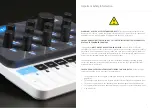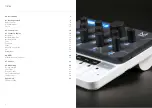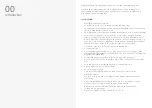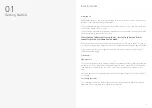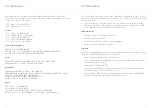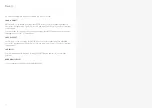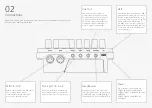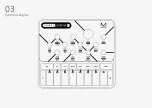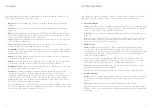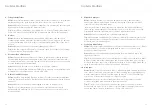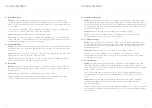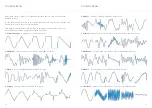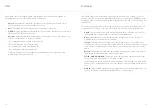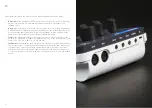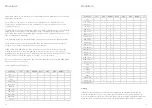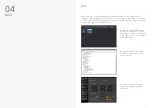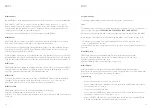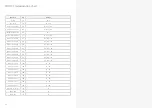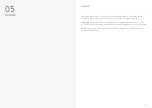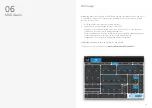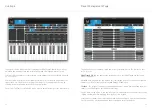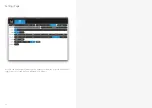
22
23
Oscillator Modifiers
11. Min Modulation:
Effect:
A form of amplitude modulation where Wave 1 and Wave 2’s oscillators are
compared against each-other and whichever’s amplitude value is lower is then output. If
Wave 2 is tuned differently to Wave 1’ then both frequencies are often superimposed on
to the sound.
(Note: If Wave 1 and Wave 2 are the same waveform with no difference in tuning then
there will be no effect as they will both have the same value.)
Control:
Crossfades between the Dry and Compared signal.
Tip:
Strange sync like effects can be created when detuning Wave 2 to different Octave
values than Wave 1. For Spread like effects, try keeping the oscillators at mostly the same
tuning, with a small amount of fine detune applied.
12. Sine Wavefolder:
Effect:
Boosts the amplitude of Wave 1 and whenever the oscillators cross the maximum
amplitude limits of the synth the waveform then folds back in on itself with a sinusoidal
response.
Control:
Controls the amount of gain boost applied to the oscillator (the amount of gain
applied affects how many times the waveform folds).
Tip:
This modifier is better suited for “smoother” timbres than the Triangle Wavefolder
due to the gentler slope when the waveform folds over.
13. Bit-Crush:
Effect:
Applies a continuous bitrate reduction effect independently to each of Wave 1’s
Oscillators, gradually reducing the resolution of the waveform and resulting in staircase
like waveforms.
Control:
Controls the amount of bitrate reduction applied to Wave 1.
Tip:
This Modifier works especially well when being slowly modulated at low octaves
where the gradual amount of information loss is audibly clearest.
Oscillator Modifiers
14. Scrunch Phaseshaper:
Effect:
Reshapes the phase of Wave 1’s oscillators so that instead of reading through
the wavetable linearly and generating the normal shape, a different output waveform is
produced instead. This modifier has the effect of gradually reading through the majority
of the wavetable at a faster rate and then playing back the remaining values at a slower
speed within a single cycle.
Control:
Changes the read curve from linear to fully shaped on Wave 1
Tip:
For the most tonally varied results across the range of the control try using
asymmetrical waveforms such as those found in Bank 2.
15. Lo-Fi Phaseshaper:
Effect:
Reshapes the phase of Wave 1’s oscillators so that instead of reading through
the wavetable linearly and generating the normal shape, a different output waveform is
produced instead. This modifier has a slightly arced read curve with subtle amounts of
quantisation applied.
Control:
Changes the read curve from linear to fully shaped on Wave 1
Tip:
This effect is subtler than most other modifiers, especially when used with
harmonically complex waveforms; When used with such waveforms the effect tends to
act similarly to an exciter.
16. Vocalized Sync:
Effect:
A modified version of Window Sync, where Wave 1 is multiplied by itself and
slight Phaseshaping is applied to both the Wavetable and window shape. Whilst this
effect can produce some strange formant-like timbres it is primarily designed for creating
weird oscillator sync sounds.
(Note: As both the window and some degree of processing is always applied, this
modifier will have an impact on the sound regardless of whether the control is set to
zero)
Control:
Controls both the sync playback rate (how much faster wave 1’s audible
oscillators are playing back in relation to the master counter) and the amount of
Phaseshaping applied.
Tip:
For vaguely “realistic” results try using simpler waveshapes, as well as those found in
the Formant Bank (Bank 6). For strange results try out the control with various Oscillator
Spread chords.


